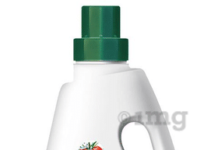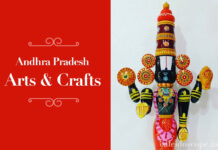Paan—a cultural motif across religious divides—speaks of a leisurely, relaxed, unhurried, inclusive way of life.
Pahadi painting depicting a noble woman accepting a paan from her waiting lady Paan, or betel chewing, cuts across religion and class boundaries in India.
 My earliest memories are of Abba, my grandfather, making paan (betel leaf). It was an elaborate ritual that required much advance planning. Of course the paan had to be bought by the dholi (platters of desi patta being his favourite), washed, its stems and tips nipped with a small scissors kept in the paandan (an elaborate box for storing all the ingredients and implements that went into the making of a pan) for precisely this purpose, each paan ka patta folded neatly and precisely along its spine and torn into two equal halves, then carefully stored in a damp, cool, red piece of cloth (a pure, somewhat coarse, cotton called tuul not to be mistaken with the gauzy tulle).
My earliest memories are of Abba, my grandfather, making paan (betel leaf). It was an elaborate ritual that required much advance planning. Of course the paan had to be bought by the dholi (platters of desi patta being his favourite), washed, its stems and tips nipped with a small scissors kept in the paandan (an elaborate box for storing all the ingredients and implements that went into the making of a pan) for precisely this purpose, each paan ka patta folded neatly and precisely along its spine and torn into two equal halves, then carefully stored in a damp, cool, red piece of cloth (a pure, somewhat coarse, cotton called tuul not to be mistaken with the gauzy tulle).
Then there was the making and folding of the paan itself: my grandfather, a professor and a poet, dreaming, pensive, thoughtful as he meticulously dabbed a bit of kattha (katechu paste) and the merest smear of chuuna (slaked lime), and folded it just so before carefully placing it in his dibiya (a small silver box that fitted in his pockets). The finely sliced chhaliya (areca nut) and a pinch of tambaku (tobacco) went into a batua, hand-stitched by my grandmother, Amma, from bits of silk and brocade; the batua accompanied the dibiya wherever Abba went: conferences, classrooms, talks.
Paan is becomes way of life
Eating a paan and keeping a functioning paandan was once a way of life. Naturally, therefore, the paan was a cultural motif, cutting across religious divides, and speaking of a way of life that was leisurely, relaxed, unhurried, inclusive.
From something one ate between meals or after meals, from an aid to digestion to a mouth freshener, occasionally laced with stimulants and even aphrodisiacs, it moved seamlessly to occupy a special place in popular culture.
Offered as a mark of respect to honoured guests, strung across doorways to usher in good luck on auspicious occasions, offered to brides during wedding rituals, the humble paan leaf is truly pan-Indian in its reach across the length and breadth of India as well as spilling across the Indian sub-continent.
Given its presence in daily life—being sold from roadside kiosks to featuring on playing cards, embroidery motifs and jewellery—naturally therefore it appears in poetry, too.
The Urdu poet has written reams and reams upon this not-quite-food, not-snack, yet ubiquitous leaf. The way it was traditionally made was a far cry from the bloated leaf we are accustomed to now seeing, bursting with all manner of candied fruit, flavoured betel nuts, over-sweet syrups and far too many contrasting tastes and textures.
Multifarious presence of Paan in urdu poetry
 It was the subtle flavours that mixed with its red juices, that stained lips crimson, that caused some of the most popular and well-respected poets of their age to wax eloquent on its multifarious presence.
It was the subtle flavours that mixed with its red juices, that stained lips crimson, that caused some of the most popular and well-respected poets of their age to wax eloquent on its multifarious presence.
Zaheer Dehelvi talks of the ritual of “sending” paan, of the women of the household making paan for guests, and how offering paan was once a sign of hospitality, just as not sending paan was a slight and an offence:
Paan ban ban ke mirii jaan kahaan jaate hain Ye mire qatl ke saamaan kahaan jaate hain
(Who are these paan being made and sent for Who are these instruments of my torture meant for)
Or this by Akbar Allahabadi on the coquetry that often accompanied the offering of a gillori (a folded morsel of paan):
Lagaavat kii adaa se un kaa kahnaa paan haazir hai Qayaamat hai sitam hai dil fidaa hai jaan haazir hai
(The affection with which she says: here is the paan Wreaks havoc, inflicts cruelty, causes heartbreak)
Agony and ecstasy of love… and Paan
The agony and ecstasy of love is brought forth in all its vividness in this sher by Mushafi Ghulam Hamdani
Gar maza chaaho to katro dil sarotey se miraa Tum supaarii kii dalii rakhte ho naahaq paan mein
(If you want real pleasure snip at my heart with a betel-slicer Why do you needlessly place a betelnut on the betel leaf)
Mir Taqi Mir speaks of the allure of the beloved speaking through a mouth full of paan:
Jab hum-kalaam hum se hotaa hai paan khaa kar Kis rang se kare hai baatein chabaa chabaa kar
(When he addresses me with his mouth full of paan With such style he speaks to me as he chews on it)
The red of the betel juice was routinely likened to fresh blood, blood from a lover’s bleeding heart, as in this sher by Hatim:
Tere honton ke taiin paan se laal Dekh kar ḳhun-e-jigar khata huun
(Your lips stained crimson with paan I look at them and eat the heart’s blood)
Nazir Akbarabadi alludes to the use of the paan as a cosmetic to redden the lips:
Kaajal mehndi paan missi aur kanghii chotii mein har aan Kyaa kyaa rang banaavegii aur kyaa kyaa naqshe dhaalegii
(Kohl henna missi paan comb and braid each have such style What artistry they have wrought and what impressions they will make)
Chewing on language and memory
 There’s Gulzar who has written a great deal on the paan, such as this nazm:
There’s Gulzar who has written a great deal on the paan, such as this nazm:
Ki jaise paan meon mahngaa qimaam ghultaa hai Ye kaisaa ishq hai Urdu zabaan kaa….
(Like expensive aromatic syrup that melts in the mouth with the pan So does this love for the Urdu language)
Then there were the limericks and tongue twisters and play on words and sounds such as this untranslatable ditty:
Chha liya gham ne terey warna to main aisa katha Mushkilein lakh aayein par main choona kiya
(Your sorrow enveloped me for I wasn’t like this For all the troubles that came my way I didn’t squeak)
Abba turning a page and leaving a faint red imprint, Amma replenishing the paandan or chopping the chhaliya with her sarota, the rhythmic khat-khat as she sliced them with mathematical precision or cleaned the quliyan (the small receptacles inside the paandan) in the weekly overhaul – these are just memories. But I draw solace from this sher by Bashir Badar:
Sunaa ke koii kahaanii hamein sulaatii thii Duaaon jaisii badey paan-daan ki khushbuu
(It would put us to sleep by telling us a story Like a blessing that fragrance of the big paandan)
(About the author: Dr Rakhshanda Jalil is a writer, translator and literary historian. She writes on literature, culture and society. She runs Hindustani Awaaz, an organisation devoted to the popularisation of Urdu literature. She tweets at @RakhshandaJalil.)
Disclaimer: This is an opinion piece and the views expressed above are the author’s own. #KhabarLive neither endorses nor is responsible for the same.







